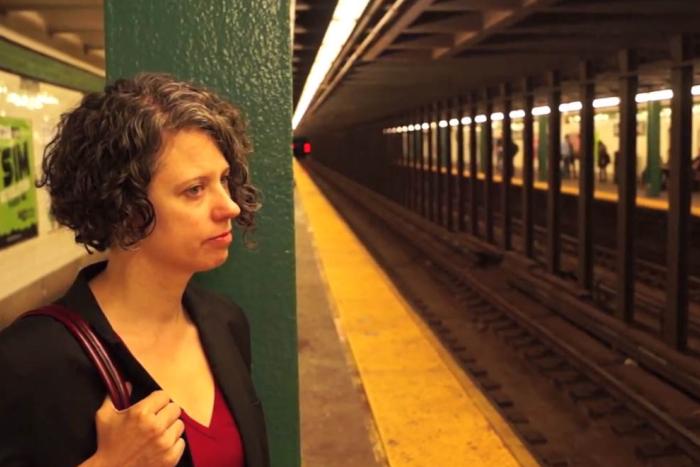Americans don’t know much about Canada. Canadians probably don’t know much about Canada, either, compared to how much Americans know about America, because Canada doesn’t consider itself as important to know about. Nonetheless, we know more about Canada than Americans do.
Canadians often wonder what Americans think about when they think about Canada. This is a ridiculous question, because Americans never think about Canada. How often do you think about Australia? Maybe you’re bored one day and you read Nicole Kidman’s Wikipedia page and go “Oh right, she’s Australian.” Then you might spend a second thinking about the only other Australian things you know about, which are Crocodile Dundee, Men at Work, and, if you’re like me, Irukandji syndrome. And Muriel’s Wedding.
But you’re not reading the news and thinking, “I wonder what Australians will make of all this.” You’re not seeing a movie or hearing a record and thinking, “the sensibility here is very Australian.” Australia, to you, is just a blob on the map with some cartoon characters jutting out of it. Also, Americans are probably more interested in Australia than in Canada. Canada is probably more like New Zealand to them. Or Tasmania.
So I can’t fault Americans for not thinking more about Canada. And I don’t presume that any Americans will bother with the following, in which I address some misconceptions about our country and provide a more accurate account of how we live. If you’re American, and you’ve made it this far, I appreciate your willingness to expand your horizons. Perhaps you’ll decide to immigrate.
First of all, yes, Canadians do talk funny, and in a less dignified manner than in any American region. But this is because Canadians are not accustomed to talking. Canadians generally communicate by means of the McQuiggan, a long strip made of bear hide. When two Canadians want to have a conversation, they suspend the McQuiggan by their teeth and flick it with their fingers in a kind of Morse code. Except that we don't have Morse code here. We call it “tapping.”
The McQuiggan keeps our discourse civil and prevents interruption. Most other communication is made by hand gesture. An upturned palm affirms; a downturned palm negates. Pointing is illegal, and can lead to jail time. Jail time in Canada is called “time out.”
The Canadian diet does include bacon, bagels, and maple syrup, but these are consumed during ritual brunches known as Vaniers, and then vomited up collectively—an important peer bonding exercise in a country where all public celebration must be pre-approved by the Office of the Bonhomme de Neige. Most of the time, Canadians subsist on a simple diet of berries, wafers, and bone marrow, as well as sushi for the sake of diversity. Wonderbread is often served as a dessert.
To keep the peace, the Canadian government subsidizes a number of “social valves” for our ghastlier appetites. The streets of all Canadian villages are lined with cement huts, so that, for a dime, any Canadian with the urge to dance may quell this urge in private. (Public excoriations are administered to any Canadian who makes eye contact with one exiting a hut; regular eye contact entails only a month of language lessons.) For a larger fee, Canadians can access “yelling ranges,” equipped with soundproofing headgear and a “silent room” where users can reflect on their shame in the aftermath.
Every year on Canada Day, Canadian villages host “Dignity Fairs,” which are sponsored by Labatt. Adults drink beer dyed yellow to match our national symbol (a smiley face with no mouth), while children enjoy toothpicks dabbed with bacon grease. Afternoons are spent playing Canada’s national sport, called The Virtue. A player, standing in the middle of a circle, is told not to do something. He or she then refrains from doing it. Applause is frowned upon, but crowd members sometimes indulge in a “wave” of shrugs.
The Canadian unemployment rate is 7.3%, and work is concentrated primarily in agriculture and witchcraft. Canadians whose employment is terminated through no fault of their own enter suspended animation at government-run labs known as Verve Generators. Their resumes are circulated through a mailing list known as the Bourgeois Sovereign, until a landowner agrees to take them on. However, recent cutbacks have forced some Verve Generators to close, pushing the unemployed into community service positions—organizing gravel at our public gravel pits, or going door-to-door inquiring after people’s health—for which they receive a small stipend.
Canadians value the nuclear family. While it’s true that some kin units live in igloos, most rent space in multi-family circus tents and sleep collectively in flannel mounds. Incest is unusual, but occurs; children of incest are called Hyperselves and treated with polite disdain. Because daycare is not subsidized, roving gangs of child bandits are a pressing social problem, for which our Conservative government has yet to pose any worthwhile solution.
Statistically, Canada is less religious than the United States, but most Canadians still belong to the Canadian Orthodox Church, if only to uphold tradition. Sunday service generally begins with a round of “Sometimes When We Touch” or “Wreck of the Edmund Fitzgerald” (other hymns include “Log Driver’s Waltz” and “As the Years Go By”). Sermons consist of inoffensive platitudes and each service ends with the collective shaking of hands, followed by ritual purification by Purell.
Asked to name a Canadian icon, Americans might point to Neil Young or Ryan Gosling or Peter North. But true Canadian icons include Gordon Lightfoot, Peter Gzowski, and Harry Chapin—not a Canadian, but much loved in Nova Scotia, where his legacy is honoured at an annual festival in Ovens Park, where “singing, storytelling and good-natured rabble-rousing are nearly nonstop.”
And yes, healthcare is publicly funded. It’s great.






